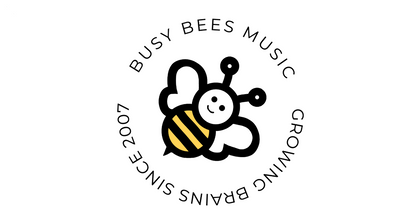
CLUB MARCONI, 121-133 PRAIRIE VALE ROAD, BOSSLEY PARK NSW 2176

You’re in the middle of Coles and your kiddo is melting down because they can’t have a lollipop right now. Or class ends and they’re upset because their scarf has to go back in the box or they can’t take the doll home.
You might find yourself saying: ‘You can have one when we get home.’ ‘It’s OK we’ll play with it again next week.’ ‘Here hold this instead.’
These are all versions of emotional detours. They’re well-meaning, an attempt to soothe to distract to move on, but sometimes your kiddo can interpret it as this feeling is just too much - let’s try to stop it.
Emotions are a very normal part of life. We all have them but it does seem like our kiddos have them bigger. The feelings might be big loud messy but they’re not permanent so a helpful tip is to try to think of an emotion like a train in a tunnel. Once your kiddo is on the train they need to move all the way through it to come out the other side. There’s no shortcut. No escape hatch. No fast-forward button. Your kiddo doesn’t need you to steer the train they need you to sit next to them while it drives on through to the other side.
In a recent Huberman Lab podcast Dr Becky Kennedy tells a story that shows what this looks like in real life.
Her son was upset. ‘You were supposed to wash my sweater’ he said.
Now she could’ve jumped in with logic:
‘You never asked me to.’ ‘That’s not true.’ ‘I didn’t even know you wanted that.’
But she didn’t.
She paused and simply said ‘Hmm.’
That’s it. No correction. No defensiveness. No argument.
And in doing so she stayed in the tunnel with him. She didn’t try to reroute the train, she let it run. She trusted that the feeling behind the comment (maybe disappointment or frustration) was more important than the accuracy of the statement.
This ‘do nothing’ approach can feel unnatural at first. We’re so used to solving problems smoothing things over or helping kids ‘move on.’ But staying with the feeling and not fixing it is the real work of co-regulation.
Instead of: ‘It’s not a big deal.’ ‘We’ll do it tomorrow.’ ‘You’re overreacting.’
Try: ‘You’re really disappointed.’ ‘It’s hard to stop when you’re having fun.’ Just being there while the tears roll.
No logic. No lecture. No fixing. Just presence.
It’s Not Always Easy
In the moment it can be really hard to remember to stay present with big emotions. Your own stress and instincts might pull you toward fixing distracting or smoothing things over. That’s completely normal. It’s a skill that takes time.
Slowly building small strategies like pausing to breathe naming the feeling out loud or simply sitting quietly with your child can help make staying in the tunnel feel less overwhelming. It’s not about perfection. It’s about progress.
Here’s the hard part. Riding the tunnel can feel really uncomfortable for us too. We want to feel useful. We want to help. And when your kiddo is crying or yelling or melting down our nervous system screams ‘DO SOMETHING.’
But sometimes doing nothing is doing something. You’re staying steady. You’re showing that big feelings are safe. You’re helping your child build emotional strength by simply being present.
The feeling will pass because that’s what feelings do.
And when it does your child will have learned that they can survive that tunnel and that you’ll walk through it with them.
Listen to Dr Becky’s full conversation with Andrew Huberman here:
https://www.hubermanlab.com/episode/dr-becky-kennedy-protocols-for-excellent-parenting-improving-relationships-of-all-kinds